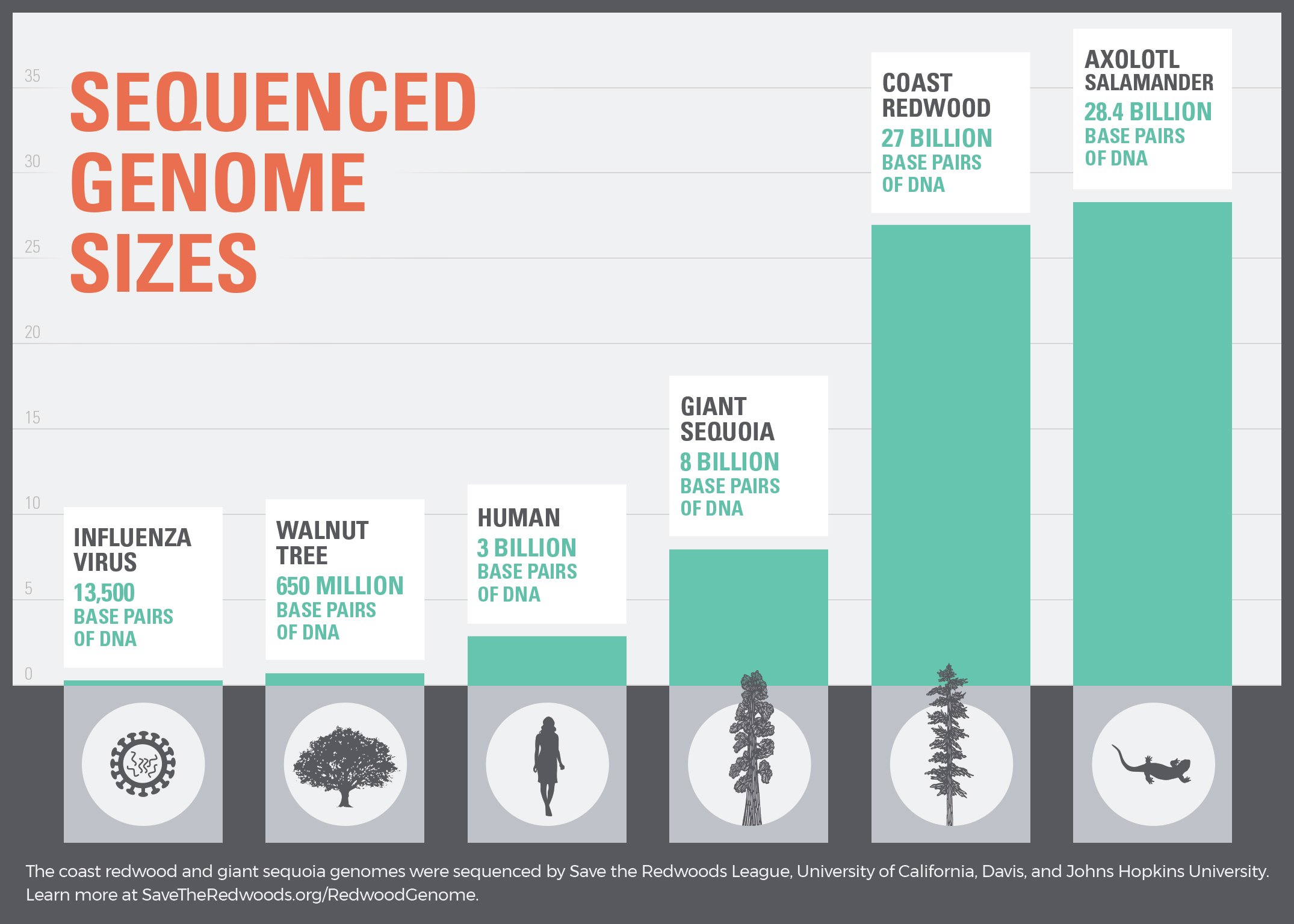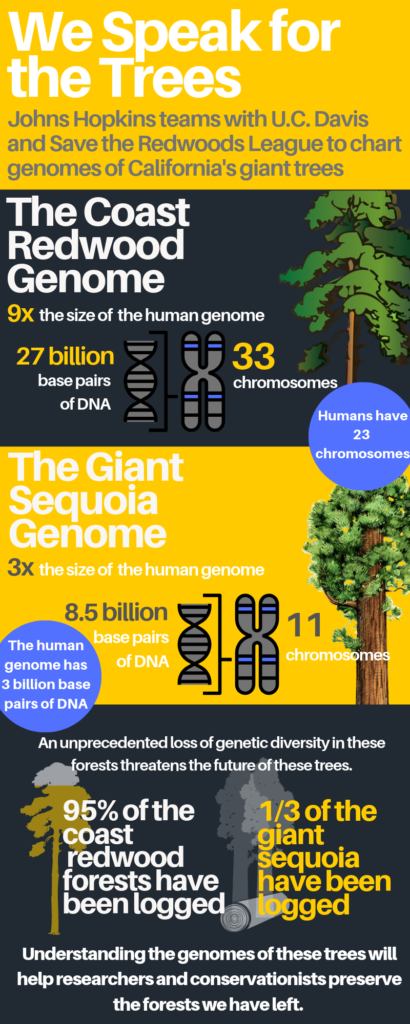Steven Salzberg, Bloomberg Distinguished Professor of biomedical engineering, computer science, and biostatistics at Johns Hopkins University, collaborated with researchers from the University of California, Davis and Save the Redwoods League to successfully sequence the coast redwood and giant sequoia genomes. This marks the first major milestone of a five-year project to develop the tools needed to study the genomic diversity of these forest species.
At nearly nine times the size of the human genome, the coast redwood genome is now the second largest ever sequenced, with six sets of chromosomes (hexaploid) and 27 billion base pairs of DNA. The genome of the giant sequoia is roughly three times that of the human genome. The largest genome sequenced to date belongs to the axolotl, a North American salamander whose genome of 28.4 billion base pairs was completed in 2018. Like the human genome, the axolotl genome contains two sets of chromosomes (diploid).
“We pushed the boundaries of genome sequencing technology to take on the redwood and sequoia mega-genomes,” said Salzberg. “After using our specially developed algorithms to assemble these enormous and complex genome sequences, we have gained a new appreciation for how difficult it is to put together a hexaploid genome, especially one as large as the coast redwood’s.”


